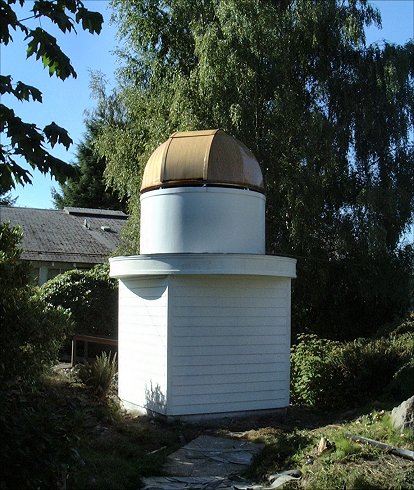The idea
that we live in multiple universes has always been a difficult one for
me to grasp. After all, I have enough trouble just grasping the one I
wake up in every morning. By my simple count, I seem to be able to
ascertain that there are just two universes available to me on any given
day. There is the one we all generally refer to as "the universe." The
other is the one inside my skull, the personal universe composed of my
brain and all that goes on inside of it. My mind is a universe with its
own unique laws. It sometimes seems completely unrelated to the other
communal universe that we all share.
 Both of
these universes hold fast to their secrets and remain two of our most
challenging frontiers. Both continue to surprise us with
theory-shattering revelations. We used to think of the brain as being
kind of like Plaster of Paris. Once it was broken, that was all she
wrote. But in the world of cognitive rehabilitation for people who have
experienced severe brain trauma, we are discovering that this old view
is far from the truth. The human brain is much more fluid than we
thought. New neural pathways can be stimulated to grow new ways of
thinking and looking at the world. The brain just needs a healthy inflow
of data. Brain cells dance with delight when they hear a certain kind of
music - the kind of music that respects the individual, offers
participation, and rewards effort.
Both of
these universes hold fast to their secrets and remain two of our most
challenging frontiers. Both continue to surprise us with
theory-shattering revelations. We used to think of the brain as being
kind of like Plaster of Paris. Once it was broken, that was all she
wrote. But in the world of cognitive rehabilitation for people who have
experienced severe brain trauma, we are discovering that this old view
is far from the truth. The human brain is much more fluid than we
thought. New neural pathways can be stimulated to grow new ways of
thinking and looking at the world. The brain just needs a healthy inflow
of data. Brain cells dance with delight when they hear a certain kind of
music - the kind of music that respects the individual, offers
participation, and rewards effort.
Astronomy can perform
this role. This is the story of my attempt to share my passion for
astronomy with a community of individuals that society is largely
unaware of and is perhaps a little frightened to acknowledge. In January
1999 I began teaching an astronomy class at the Delta Rehabilitation
Center in Snohomish, Washington (40 kilometers northeast of Seattle).
This is a facility for people who have experienced severe brain
injuries. Everyone who has sat in on this class has been amazed at the
ability of astronomy to inspire the students to learn, to remember, to
inquire, to laugh, and to wonder.
My Crazy
Idea
I can vividly remember
our first class. Talk about stage fright! Even 20 years in show
business, comprising more than 100 plays and film and TV bit parts,
wasn't enough to prepare me for that first evening. I had only been
involved in amateur astronomy for about three years at that point and I
was nervous about being able to deliver the goods. I looked out over a
class of about 25 people, most of them in wheelchairs and all of them
looking at me intently. I knew I had their attention, but, where to
begin? How much and what kinds of information could this crowd handle?
How would their injuries affect their participation? Did I really know
enough astronomy to teach this class?
 Taking a cue from a well
known 12-step program, I began, "Thank you all for coming. My name is
Paul and I'm an amateur astronomer." The next hour and a half went by in
a blur. At one point, someone asked what Jupiter was made of and, as my
mind fumbled to recall the proper elements and molecules, a strained
voice in the crowd began uttering the list: hydrogen, helium, methane,
ammonia. I scanned the faces to see who was talking and saw that it was
a young man in a black cowboy hat speaking with tremendous difficulty.
When he finished, I ask him his name and how he knew this. Jeff Kammers
explained that before his accident 10 years earlier, he had been a
practicing amateur astronomer in Alaska. He owned a 4.5-inch refractor
and specialized in planetary observing. He had forgotten about astronomy
entirely until the class, but that it was all beginning to come back to
him in a rush.
Taking a cue from a well
known 12-step program, I began, "Thank you all for coming. My name is
Paul and I'm an amateur astronomer." The next hour and a half went by in
a blur. At one point, someone asked what Jupiter was made of and, as my
mind fumbled to recall the proper elements and molecules, a strained
voice in the crowd began uttering the list: hydrogen, helium, methane,
ammonia. I scanned the faces to see who was talking and saw that it was
a young man in a black cowboy hat speaking with tremendous difficulty.
When he finished, I ask him his name and how he knew this. Jeff Kammers
explained that before his accident 10 years earlier, he had been a
practicing amateur astronomer in Alaska. He owned a 4.5-inch refractor
and specialized in planetary observing. He had forgotten about astronomy
entirely until the class, but that it was all beginning to come back to
him in a rush.
Right then and there, I
was hooked. Line and sinker. In that moment I knew that my crazy idea to
teach astronomy to a group like this wasn't the least bit crazy. It also
turned out that Jeff wasn't the only member of the class hungry to learn
more about the night sky.
The idea to teach this
class had come to me several months earlier during a trip to Los
Angeles. A couple of friends knew that my lady Valarie and I had an
interest in astronomy. They had arranged through a friend for Valarie
and I to spend a night observing with Mount Wilson Observatory's 24-inch
scope. This is the instrument used by the Jet Propulsion Laboratory's Telescopes in Education (TIE) program. Students from around the globe
can dial in with a computer and take control of the scope and its ST-6 CCD camera to take pictures of the deep-sky objects of their choosing
and download the images to their classroom. It's truly an amazing
program.
TIE volunteer Jim Norris
was our guide that night. It was just getting dark when we arrived at
the telescope. The marine layer had ushered in a low haze that blanketed
the Los Angeles light dome, so the sky looked surprisingly dark. Once
inside the dome, Jim went through a long checklist of cautions and
explanations and then turned the scope over to us. Valarie controlled
the dome while I brought up the charting software on the computer and
got chummy with the targeting and camera controls. Pretty soon, we were
looking at a very passable image of the Dumbbell Nebula (M27) that we
had captured in about 20 seconds. There is no substitute for aperture.
 We took four more shots
and then Jim said it was time for the main event. The phone rang and we
could hear a teacher and a bunch of students on the speakerphone,
calling in from a middle school in San Diego. After a brief exchange,
Jim told the teacher, "Its all yours," and Valarie and I stood by in
amazement as the students took over the sky charting program I had just
been using. Using a mouse, they targeted the edge-on spiral galaxy NGC
891, opened the camera link, set the exposure, fired the shutter, and a
minute later they had the galaxy glowing on their classroom monitor.
"Bing-badda-boom," as they say. I suddenly knew that long distance
robotic astronomy is not only a reality, it's as easy as playing a video
game. That's when the idea hit me full force. I said to Jim, "Hey, I
know a group of people that might really get a charge out of something
like this. How much do you know about brain injury?"
We took four more shots
and then Jim said it was time for the main event. The phone rang and we
could hear a teacher and a bunch of students on the speakerphone,
calling in from a middle school in San Diego. After a brief exchange,
Jim told the teacher, "Its all yours," and Valarie and I stood by in
amazement as the students took over the sky charting program I had just
been using. Using a mouse, they targeted the edge-on spiral galaxy NGC
891, opened the camera link, set the exposure, fired the shutter, and a
minute later they had the galaxy glowing on their classroom monitor.
"Bing-badda-boom," as they say. I suddenly knew that long distance
robotic astronomy is not only a reality, it's as easy as playing a video
game. That's when the idea hit me full force. I said to Jim, "Hey, I
know a group of people that might really get a charge out of something
like this. How much do you know about brain injury?"
Living Life
A recent Harris poll
indicates that the American public is unaware of how serious a problem
traumatic brain injury (TBI) really is. Prior to the Korean and Vietnam
wars, severe head injuries were usually fatal. But during these wars
combat medics and field hospital teams learned how to better address the
critical first 72 hours following severe brain injuries. What they
learned has been both a blessing and a curse. The blessing is that many
people can now survive head injuries that used to be fatal. The curse is
that there is a growing population of citizens that will be in recovery
for the rest of their lives and the United States has not yet
established a national policy regarding the services and assistance they
require to travel the road from coma to community.
The symptoms for
traumatic brain injury are virtually infinite, ranging from mild
behavioral disorders and memory problems to chronic seizures and
non-responsive states. Many victims are also physically impaired. Speech
and vision problems are common. Unlike cases of mental retardation,
people who have sustained a brain injury are, in many ways, just as they
were before the injury. In other words, a brilliant individual can be
locked inside a broken mind, desperately waiting for someone to find a
way in, to clear away the wreckage and discover what is left. That
person is still yearning to grow and finish becoming the best person he
or she is capable of becoming. That's the mission of the Delta
Rehabilitation Center. The technical term is "cognitive rehabilitation"
and Delta's motto is "living life." Delta's story pretty much begins
with my cousin Mike.
In 1974, Mike Walsh was a
20-year-old college student. Sharp, tough, confident and witty, Mike was
ready to take on the world. One day he was driving his VW Bug when the
drunk driver of a Chevrolet turned left in front of him. The Chevy
plowed up the hood of Mike's Bug, its bumper slamming into Mike's head.
Mike was so badly injured that the first police officer to arrive
assumed he was dead. The officer pulled Mike from the car and dutifully
began CPR. He finally got a pulse and Mike started breathing again and
began his long journey down a new and uncertain path.
At that time, Mike's
parents, Wally and Donna Walsh, were managing a nursing home called the
Snohomish Chalet. They had taken over management of the center just
three years prior to Mike's accident. Then they got that awful phone
call: "Your son is in the intensive care unit and is not expected to
live."
Mike was in a deep coma
for seven months. After the first five months Wally and Donna brought
Mike home to a specially constructed private room at the chalet. Mike's
family talked and read to him every day and many nights because they
firmly believed he was still "in there." The doctors and specialists had
all given up hope. The most optimistic doctor said that even if Mike
woke up after being comatose this long, he would probably be a
vegetable. I think that doctor would have made a better grocer than a
physician.
Mike eventually woke up.
One night, a nursing assistant tucking him in broke wind loudly and he
started to laugh, which has led to "whoopee cushions" being part of the
equipment for several coma recovery units around the world, not for use
in coma recovery per se, but because such bodily sounds are a common
currency in early childhood communication, the use of such sounds often
stimulates laughter and recognition where more sophisticated approaches
would miss the mark.
Mike is still physically
impaired but in the years since his initial recovery, he has learned to
care for himself, and he returned to school to finish studies in math
and German, write poetry, and tell at least 10,000 jokes using a little
keyboard printer attached to his wheelchair. Mike is a loved and honored
member of the family and what has become the Delta Rehab community. His
nickname is Rotten. My favorite Mike quote is: "Death is for wimps."

Mike and his brother, Chris
To learn more about what
had afflicted Mike, Wally and Donna began to seek out more brain injury
survivors looking for a place to recover. Over the years the Snohomish
Chalet has quietly evolved to become one of the world's premier head
injury rehabilitation facilities. The activities calendar is packed
year-round with all kinds of stimulating events. The entire local
community pitches in, teaching crafts, playing music, and putting on
festivals. For years, my primary volunteer duties were to help set off
fireworks for the 4th of July and to play one of the nine Santa Clauses
required to handle the annual Christmas party for the 300 residents and
staff. Input, stimulus, and good old-fashioned human involvement are the
key ingredients when it comes to cognitive rehabilitation. This is a
population limited in its ability to venture out into the world, so the
world must be brought to them. Without such "food for thought," it has
been proven that these people will die years, if not decades, before
their time.
Now that you know a
little more about my personal connection with traumatic brain injury,
you can better understand my epiphany on Mount Wilson. I just had this
hunch that exploring the universe would appeal to people who must spend
most of their time confined to four walls and a wheelchair. I was right.
On
Stage
The first class was in
January 1999. My intent was to schedule a TIE program event two months
later. I would hold classes twice a week leading up to the TIE night so
that the students would be able to appreciate what the images were all
about. The weather gods thought otherwise and our first on-line imaging
session didn't occur until May. By then, the class had a firm grasp of
what we were hunting for. I used the analogy of birding. The Sun and
planets are in our local garden. The stars and nebulae are farther out
but still within the jungle canopy.

Globular clusters hover
above the jungle canopy, and far above the canopy were other jungles
with their own globs and, as we're finding out, their own planets. When
the time came, the class voted to grab a variety of different "birds"
but there was a decided preference for galaxies.
Our TIE night finally
came and we pigged out. Because most of the students struggle with
vision and varying degrees of motor-skill problems, I acted the part of
computer interface, translating the students desires and suggestions
into mouse-clicks on an old PC. The PC was connected to a large-screen
television so the whole class could clearly see what was going on.
Our first image was a
hit. The scope had inadvertently locked-up during the exposure and we
were treated to a lovely set of star trails. This was an effective way
to illustrate the rotation of Earth! The succeeding shots were
magnificent, however, and included globular cluster M3, Coddington's
Nebula, and spiral galaxies M51 (the Whirlpool Galaxy), M63 (the
Sunflower Galaxy), M106, M109, NGC 3184, and NGC 3938.
The prize catch of the
evening was Supernova 1999by in NGC 2841 during it's peak brightness.
The Rochester Academy of Science website later accepted our image into
its data pool for this supernova. This was a huge thrill for the class.
It represented not only one small step into the world of "real
astronomy" but also a giant leap in self esteem and a sense of
connection and accomplishment. We had "Harley" black and orange T-shirts
printed up to commemorate the event. No more glorious raiment was ever
worn by kings, nor with such pride.
Val and I took a break
from the routine of classes as other priorities took control. Then one
day my cousin Chris called me. Chris is Mike's oldest brother and he now
runs Delta. Chris said, "They won't shut up about it." I laughed and
said, "Yup, I figured that might happen." To which Chris replied, "How
much would it take to build our own robotically controlled observatory?"
A
Quantum Leap
Well, as I write this
article, the Snohomish community has donated $6,000. Fellow amateur
astronomer and scope vendor Herb York helped us acquire a Meade 10-inch
LX200 telescope with super wedge and moto-focuser at manufacturer's
cost. Another local amateur, Jonathan Murray, bought us an SBIG STV for
a direct video link to the large screen TV the residents require in
order to view the images. We are now in the design phase of constructing
an actual observatory with attached classroom where our class can invite
local school children for a look through the telescope. We'll bring
things full circle by team-teaching the school kids. That's what I call
a quantum leap.
It's important to note
that the technology is secondary. The students are the center of the
event and nothing more than a floor to stand on is necessary. Let me
illustrate. NASA recently sent a videographer to capture our class for a
NASA press release. The young man arrived somewhat unexpectedly and we
had to quickly schedule an impromptu class.
About 25 students showed
up including a new woman, Patty, who was extremely upset that her bingo
night had been replaced with this "astronomy junk." The planned
hour-long class turned into a full two-hour question-and-answer
discussion on everything from reviewing all of our past imaging
experiences to the effects of weightlessness on people with
disabilities. Patty ended up being one of the most avid participants and
was positively beaming when the class was finally forced to dismiss long
past its usual bedtime.
Recently, I have begun to
notice several Delta staffers picking up the ball, scouring bookstores
and hobby shops for astronomy-related items and sharing them with the
residents. The aides recognize astronomy as another valuable
communications tool in their daily work and they leap at opportunities
to add to their repertoire. One aide stopped by the local toy store and
picked up a marvelous device called a solar computer for about $30. She
has had a ball using it with the residents.
I'm not sure how the
experts would measure the success of this class in bringing about
cognitive rehabilitation. But I think I know how I would measure it. In
early September 2001, I took about 20 students outside for a casual look
at the New Moon using a web-cam hooked up to my 80mm wide-angle
refractor and laptop. As the evening darkened, the conversation took on
the relaxed feel and easy banter of a simple gathering of observing
partners. This was a profound shift in the dynamics of the class. For an
entire evening, the students' injuries had been rendered invisible to my
consciousness. My students had become my peers, and my role as teacher
had dissolved into one of simple fellowship under the stars.
When embarking on a
teaching program like this, I think it's important to remember that the
most important piece of astronomical equipment you can offer is you,
yourself. Your passion, your commitment, and your interest in the
students are more powerful than a 10-meter telescope when it comes to
transporting your audience to the farthest reaches of the universe. I
hope you'll consider the possibility of getting involved in an outreach
program like this. I can tell you from experience that it will not only
deepen your astronomical experience, as only teaching a subject can
accomplish, but you will also learn some surprising things about
yourself and your fellow voyagers. All of it good.
INTERVIEWS
AND A STUDENT POEM
Judy Bruce (Mother of Brian
Bruce):
"Brian doesn’t do a lot
of initiation* but once he was in your class, it brought questions to
mind that he asked – basically there was just his Dad and I around when
he was asking them. Like I say, he doesn’t initiate much so I thought
this was a plus – a very big plus."
(*a term from the
behavioral sciences meaning that Brian hardly ever speaks unless spoken
to)
Ed Moore, activities director at
Delta Rehab:
"Well… any time you
stimulate the brain, it’s beneficial to recovery from any kind of brain
injury. Also, more than just stimulating the brain and the thought
processes – it (the class) gives them a connection outside of the
facility. A lot of times, it seems like the walls of the facility is
kind of a "closed world" and the connection with Mt. Wilson Observatory,
hooking up with them on the telephone and seeing it on the screen is
like a line to the outside world that can help, not only mentally, but
emotionally – and if they feel better about themselves and world, then
they’re going to recover quicker. It’s helped me, personally, in my
relation with the residents in that it’s given us a common ground. I’ve
been interested on astronomy in minor way for a long time - now
they’ve got an interest, so when they have questions, it gives me
something to talk with them about, that has to do with something other
than medical rehab. So, it kind of gives us a new common ground and been
very beneficial in that way."
INDIVIDUAL
INTERVIEWS WITH SOME OF THE STUDENTS
Mike Walsh, Student:
"I would like to learn
more about the historical aspects of astronomy."
Leanne
Son, Student:
The class "Got me to
think about a wider expanse. It took me out of my wheel chair in a way –
not in the physical sense, but in my mind. My favorite thing was when
we found the supernova. It got me thinking, gee, what else is out
there?"
Yes, the class helps
because we’re not just stuck here – we’re physically stuck here – but
mentally, we’re not.
Dennis
Long, Student:
The most surprising thing
I’ve learned is "That the things that are out there are part of reality.
My favorite kind of object are the globular clusters. Even though these
appear close together, there is a lot of area in between the stars. You
don’t know what you’re missing."
Has it helped in my
recovery? "That’s a deep question… I don’t know, but it’s my personality
and character that have gotten me this far."
Jeff
Kammers, Student:
"I think it’s really neat
to know how stars are formed and planets and stuff. I think it’s really
amazing. I’ve been into it since I was a kid watching Star Trek.
Remember that show "Space 1999"? I never missed an episode. Later, in
Alaska, I had a 4-inch telescope. The Northern Lights were so bright –
some nights we couldn’t see the stars."
The class has helped me
"because what it did was kick loose memories and stuff that really
helped. Things I couldn’t remember came back and, when they came, they
came in landslides!"
Gary
Edwards, Student:
I’ve enjoyed learning
"How the planets are all circling each other and all - how they got
their names." The most surprising thing I learned was "How the planets
organized themselves altogether – their formation."
Jim
Hirst, Student and resident poet:
I’ve liked "Learning
about our Solar System and the galaxy and far off stars, etcetera… Thank
you for showing us about the Solar system and what our possibilities are
and about the galaxy quest (laughing).
It gives us a variety of
options… to choose from, rather than just moping and wondering about our
difficulties. It opens up a range of explorations for us to choose from
rather than worrying about own difficulties.
Regarding the value of
teaching astronomy at other facilities like Delta: "I think the
possibilities are endless because of the large variety of information
that is being explored. I believe the Solar System is not yet explored
enough to verify the possibilities…because we could have further things
to teach us about our experiences on earth – because we could have
diseases and problems going on that could be taken care of by some new
findings on different planets or so that we could learn from and get an
understanding of what is out there."
"I had a telescope that
my Dad left me before he died. That I used to look into space – and I
had a few questions that I never seemed to get answered. The class has
brought an understanding to me that is reconcilable with our solar
system and what our possibilities are.
Joan
Setzer, Student:
What I find most
interesting is "The possibility that we might have some contact with
life other than our own. I find astronomy very mind expanding – that’s
also why I watch a lot of channel 44, the Sci Fi channel… I believe that
space exploration in this country is hampered by "laws of the land". I
just think that the wealth of knowledge that we don’t know is so much
greater than what we do know. More money should be going to space
exploration.
I asked Joan, who
struggles with Multiple Sclerosis, about proportional distribution of
federal funds. If she had to choose between money going to MS research
or to the Space Program, she said, "The Universe takes priority".
Dave
Harmon, Student:
"It’s so spacey!"
(laughs) "I find it really fantastic to think that there is everything,
never-ending. So, if man had a way to stay alive long enough, could he
not get in a rocket ship to go far enough to reach the edge of space, if
there is one. It would have to be manned because a robotically
controlled ship could crash and ruin the mission. I trip out and my mind
will just wonder and wonder and wonder… Sometimes I think of the things
that might be of help to mankind as far a space exploration."
Whether studying
astronomy can help with brain injury? "That would depend on the severity
of trauma. Yes, having the class available made me think that, even
though so much has been accomplished here on earth, the exploration of
space leaves man not with more chapters – but whole, new, unopened
novels that haven’t even been browsed."
Viewing our
SolarSystem
A poem by
Jim Hirst, Astronomy Student 1/16/99
Today on January I6,1999
we Delta residents had a very informative date! Because Valarie and Paul
Walsh, were here at Delta to teach about our solar system not about some
hog wash!
In our Galaxy there is
about a billion stars, and surprisingly they are both near and far! And
yes I should say, our galaxy is called none other than the Milky Way!
We learned a little bit
about Mercury, Venus, Earth, Jupiter, and the sun, also we learned a bit
about Saturn, Neptune, Uranus, and Pluto before they were done!
Our next closest galaxy
is Andromeda 2 point 5 million light years away, that is the nearest big
galaxy to the Milky way! We residents learned so much more, about
gravity, comets, space travel and other planets galore!
About space we had so
very many questions, and with that Paul and Valerie were able to come
right back with some informative answers and or suggestions! We sure do
appreciate their awesome show, and even though they will be back the
next few weeks-we were sad to see them go!
Authorship
An amateur astronomer
and content editor for Astromart.com, Paul was the Director of Internet Services for the Delta Foundation.
Copyright © 2002
This article is copyrighted and rights are retained by
Paul S. Walsh,
2002, and may not be reused in whole or in part without the permission
of the author or through special arrangement with Mercury, The Magazine
Of The Astronomical Society Of The Pacific.
The Delta Observatory...
